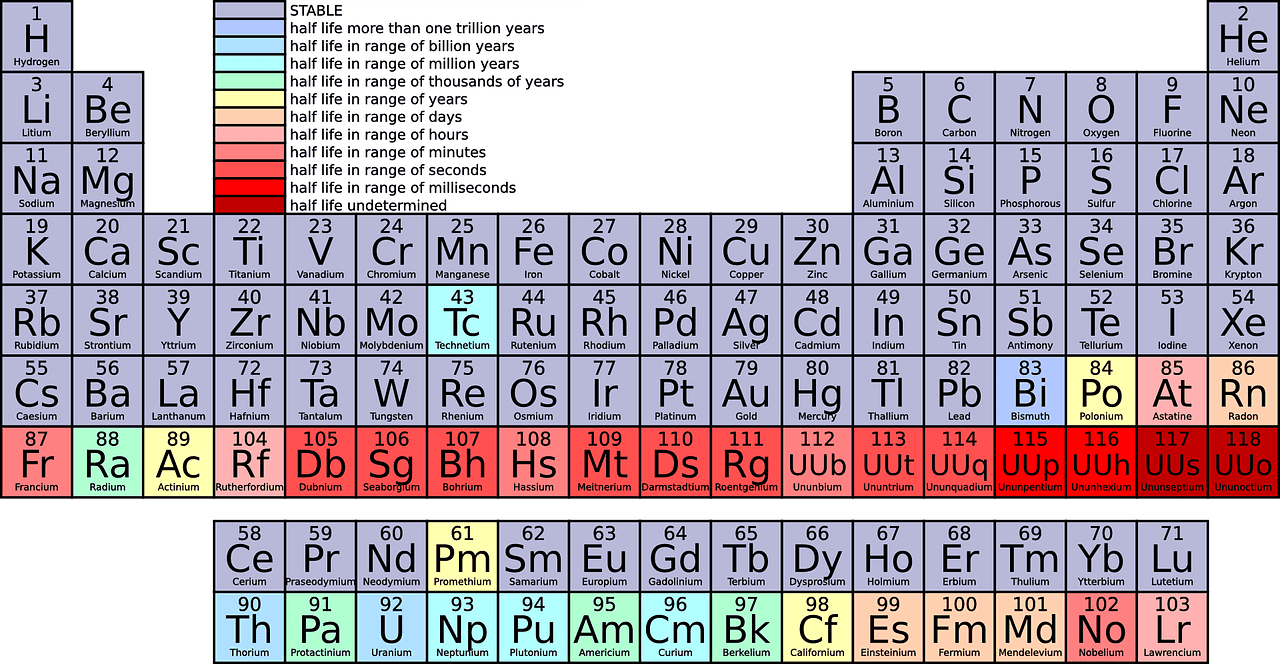
periodic table of elements
For most students in school, chemistry is that one subject they either dread or love. Either way, there is no way one can move their way past the periodic table of elements. Memorising all the 118 elements and their symbols present in the periodic table is not an easy task, whether you are learning it just for fun or for your upcoming test. All the elements have unique atomic numbers and symbols, which can be quite challenging to remember.
Fortunately, there are simple tricks that you can use to learn the table and make studying enjoyable.
Feeling excited? Let’s get started then.
Tip #1: Learn from the current table
The periodic table is occasionally updated. Hence when you are learning the periodic table, ensure that you are studying from the current one by the International Union of Pure and Applied chemistry. This way, you would be able to learn about the newly found elements.
You can find online clickable, interactive tables for practising. Besides that, you can also print some blank tables because when you write and practice, you can memorise the elements faster and better.
Tip #2: Smart repetition
While repetition is a crucial step of any learning process, endlessly repeating what you have studied will become dull. It is an ineffective method of memorisation that will ultimately bore you to sleep every time you see the periodic table. Hence, you need to adopt a smart action plan that will help you learn the table easily.
- Divided the elements into groups of ten. That way, you can learn a few elements at a time. Memorising the whole table bits by bits would make the learning process quick and hassle-free.
- Practice active learning by reciting the elements loudly. When you keep repeating something loudly, you automatically become more focused on what you are learning.
- Learning 118 elements in one session should be avoided. You need to give your brain some rest to consolidate the new information. Hence, ensure that you are taking adequate breaks in between the learning sessions.
Tip #3: Mnemonics makes it fun
Mnemonics are short phrases, slogans, facts, or stories that would help you remember the first letter of every element in the periodic table. This technique helps in creating and linking mental pictures together in the mind. It is an incredibly simple technique but amazingly effective and fast.
For example, for Group 2, you can use Beta Mange Car Scooter Bap Razi.
With this mnemonic, you can remember the elements Beryllium (Be), Magnesium (Mg), Calcium (Ca), strontium (Sr), Bromine (Br), Radium (Ra).
Another example that you can use to remember the first nine elements: Happy Hector Likes Beer But Could Not Obtain Food.
With this mnemonic, you can remember the elements hydrogen (H), Helium (He), Lithium (Li), Beryllium (Be), Boron (B), Carbon (C), Nitrogen (N), Oxygen (O), and Fluorine (F).
Tip #4: Use flashcards
Do not underestimate the value of flashcards when you are learning the periodic table. Through flashcards, you can use the repetition technique without turning it into rote learning. When you use flashcards, you are more actively learning the names of the elements rather than just repeating the words in the head.
Moreover, when you write and make the flashcards on your own, you would interact more with the periodic table, further boosting your learning process. In addition, flashcards are convenient to carry, so you can practice when you are waiting for someone or on your way somewhere.
Tip #5: Associate Images
It would be easier and quicker for you to recall the elements and their symbols than only memorising the letters by associating images. Hence, assign a picture to every element in the table.
However, try to use images that are relevant to you. For example, you can use a picture that you can associate with the element. You can associate the image of aluminium foils with remembering the name and symbol of aluminium. And for helium, you can use the image of a balloon.
Tip #6: Print the periodic table
Another great way of learning the periodic table is to print it out and hang a copy of it just beside your bed. That way, whenever you are going to bed or waking up in the morning, you can give it a read once. This will help you develop a habit of reading the periodic table at least twice a day and make you more accustomed to the elements.
Other than that, you can also keep a copy of it on your study table so that you can quickly give it a read every time you sit to study.
Wrapping Up
With these tips, you would be able to kickstart your learning process. However, remember that learning the whole periodic table at a go is not easy. Hence, start with small groups of elements for easy memorisation.
That way, you can learn the entire table effortlessly without getting confused. It would be best to take adequate study breaks when you are memorising the table to allow your brain to rest and remember everything.
Lastly, practice makes you perfect. Hence, whenever you get the opportunity, read and write the periodic table. Refrain from rote learning as it would not commit to your long-term memory. Give yourself time and be patient with the learning process. That way, you can remember the periodic table even years down the line.






